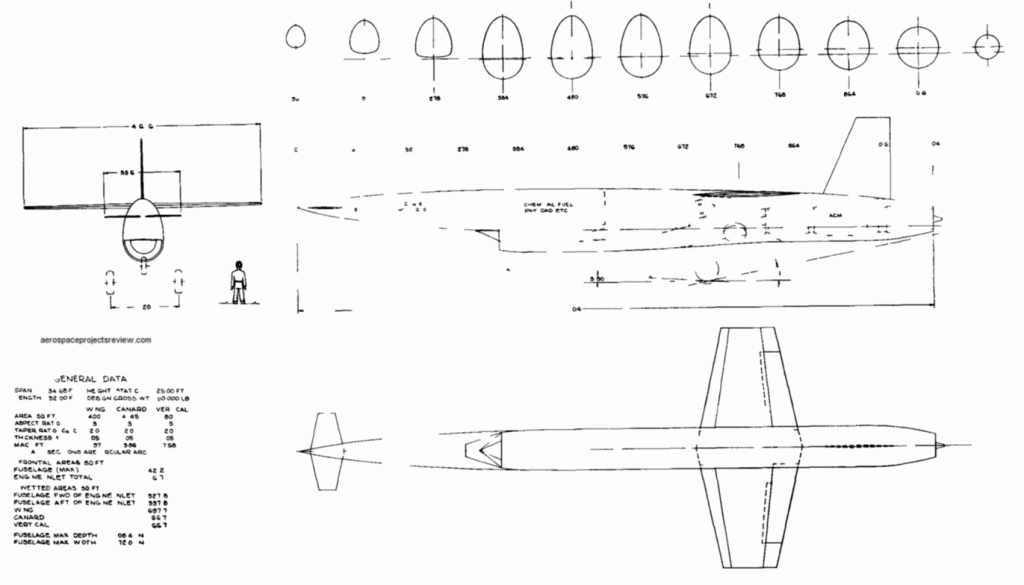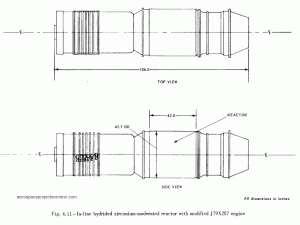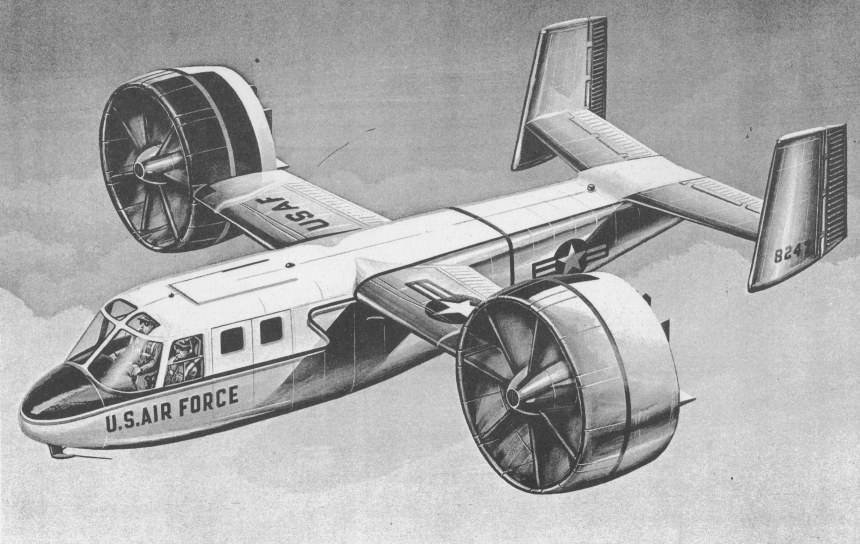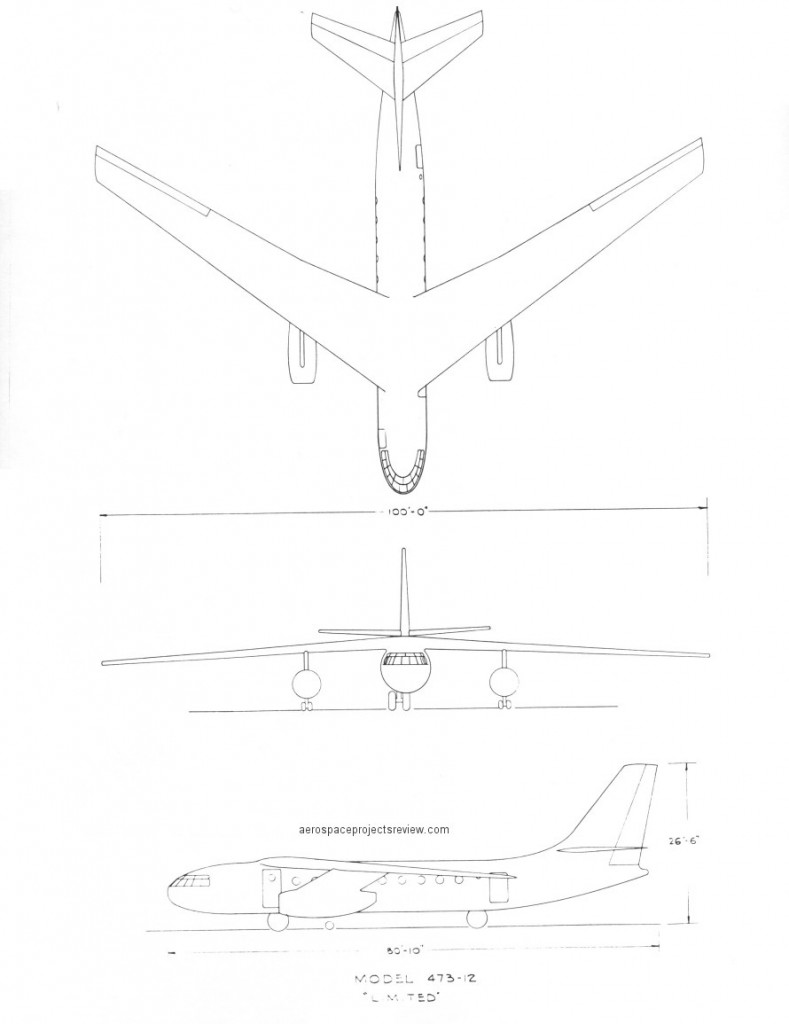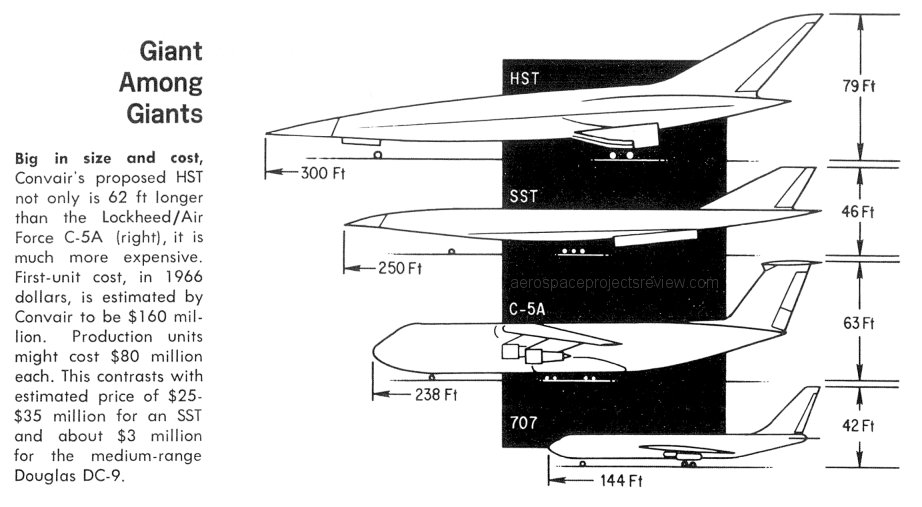In 1954 General Electric studied a nuclear powered unmanned aircraft for a photo recon role. One design considered was the ACA-8, a fairly conventionally configured airbreathing supersonic configuration with small canards and unswept wings mounted well aft. For propulsion the ACA-8 was equipped with a single ACM-1C-Mk II nuclear turbojet with a chemical afterburner. With 9,000 pounds of chemical fuel, 3000 pounds of guidance and control equipment and 3000 pounds of photographic equipment, the gross weight was 50,000 pounds. While the design seems to have some similarity with the Pluto nuclear ramjet, it was a nuclear turbojet, and thus restricted to slower speeds. Maximum nuclear-powered speed at 35,000 feet was Mach 1.57; at design cruise altitude of 40,000 feet, speed was only Mach 1.40. By using the afterburner, at 45,000 fee the max speed was Mach 3.6; at 57,000 feet, Mach 2.5. This could only be maintained for a relatively brief period, however. Note that the design is equipped with landing gear, indicating that it was to be recovered and presumably reused.
At nuclear cruise speed, it was quite interceptable, but the opposing country would have to think long and hard about just how much they wanted to shoot a nuclear reactor out of the sky over their own territory. The best option would be to follow it out and down it over the ocean.
